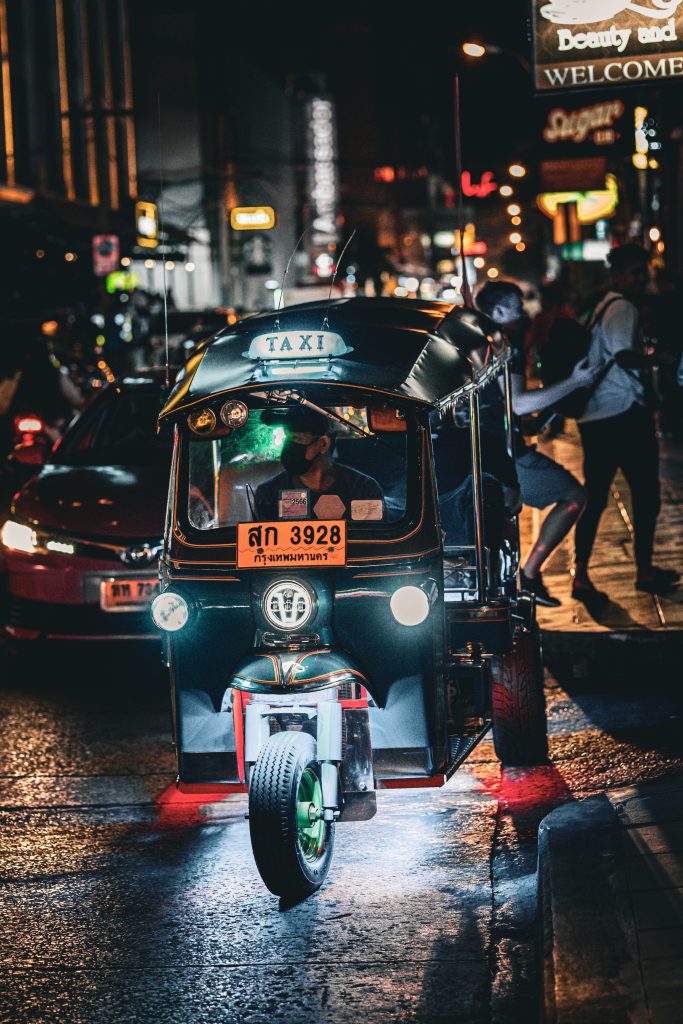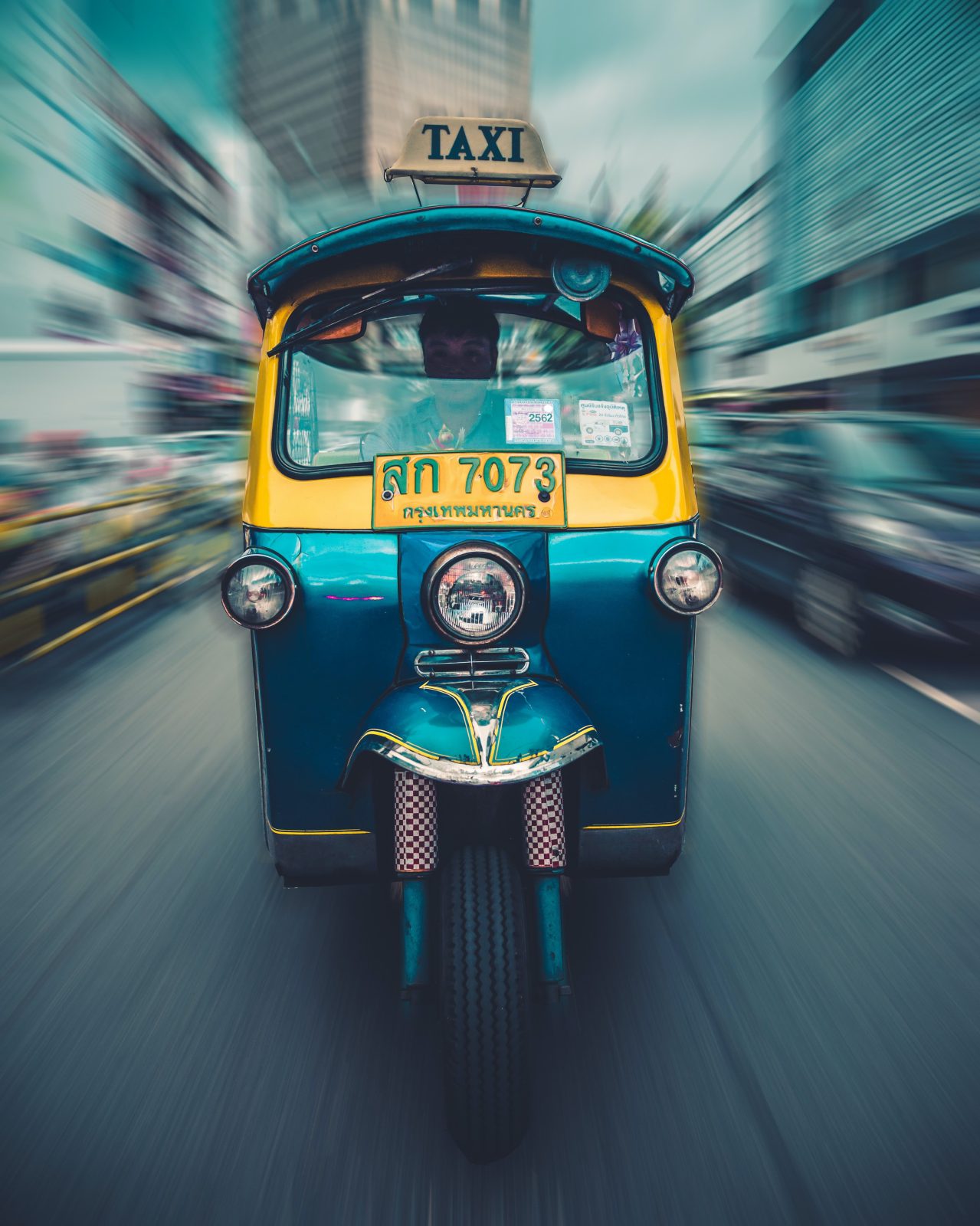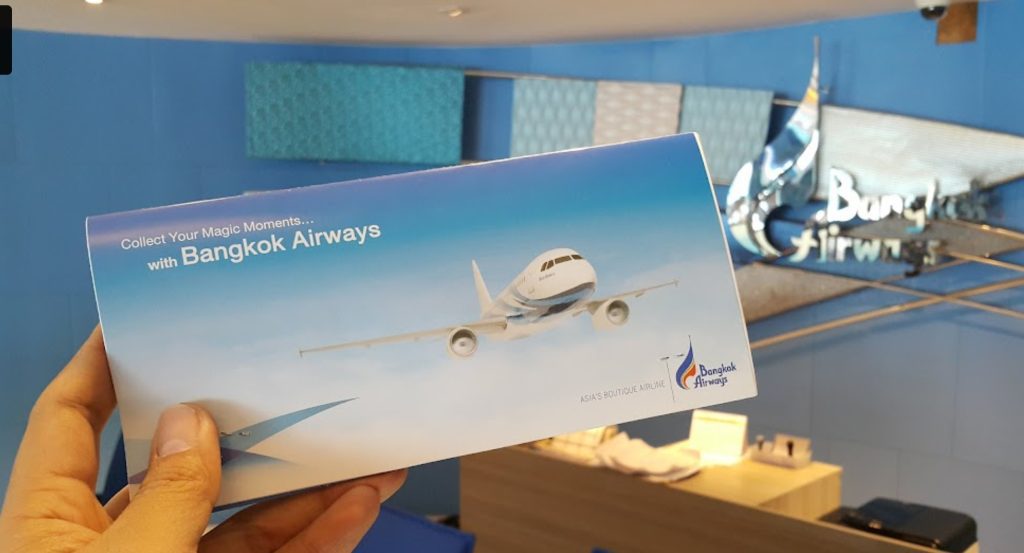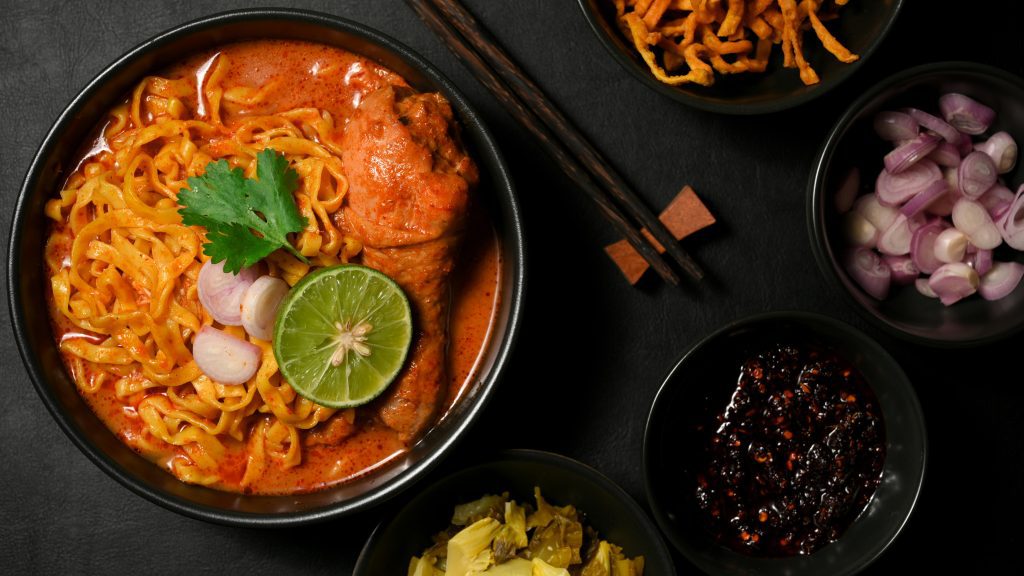Amidst the bustling streets and vibrant colors of Thailand, the iconic tuk tuk stands out as a symbol of the nation’s unique blend of tradition and modernity. Derived from the sound of their sputtering engines, these three-wheeled vehicles are as much a part of Thailand’s cultural tapestry as its ornate temples and spicy cuisine. For travelers, a tuk tuk in Thailand is not just a means of transportation—it’s an experience, a taste of Thailand’s pulse and energy.
History and Evolution of Tuk Tuk in Thailand
The tuk tuk first appeared on Thailand’s roads in the 1960s, serving as a successor to the traditional rickshaw. Over time, these motorized rickshaws became the go-to short-distance transport in cities like Bangkok, Chiang Mai, and Phuket. With their nimble size and open design, tuk tuks were perfectly suited to navigate the narrow sois (alleyways) and busy main roads of Thai cities.
While the essential design of the tuk tuk has remained consistent, it has evolved in response to the demands of modern times. Many tuk tuks now run on LPG to reduce emissions, and in certain areas, you’ll even find electric variants.
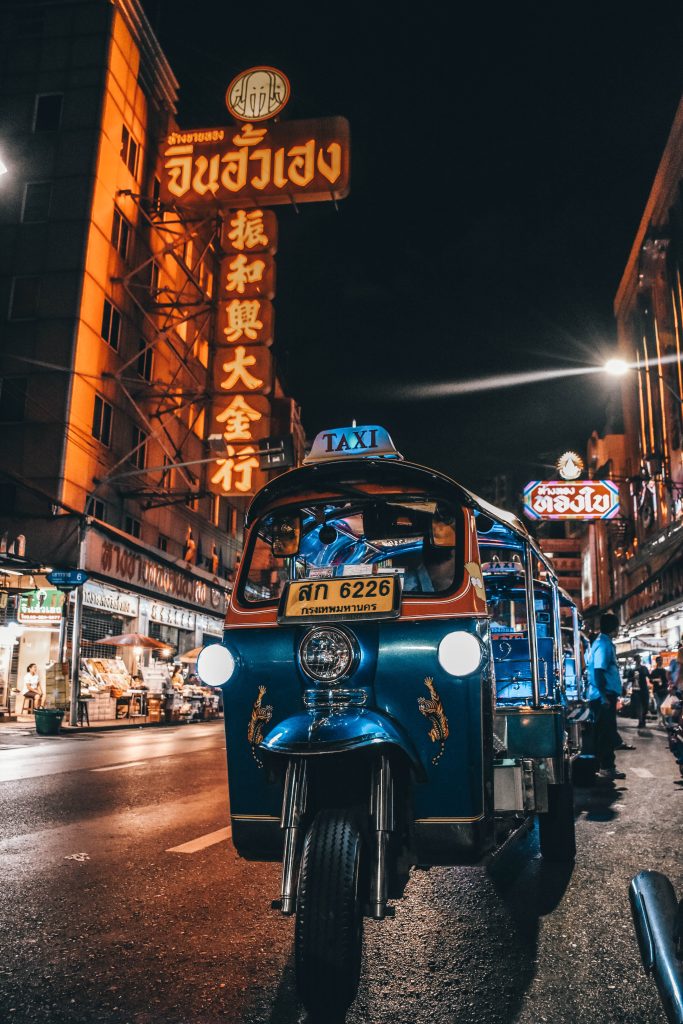
The Tuk Tuk Experience
Riding a tuk tuk is unlike any other vehicular experience. The absence of doors or windows gives passengers an unfiltered view of the surroundings, from the towering skyscrapers of Bangkok to the historical sites of Ayutthaya. The breeze that flows in is both refreshing and a little exhilarating, adding to the sensory overload of sights, sounds, and sometimes even the scents of street food.
However, the ride is not for the faint-hearted. Tuk tuk drivers are known for their audacious maneuvers, weaving through traffic with an agility that belies the vehicle’s appearance. They nimbly dodge buses, motorcycles, and street vendors, often giving riders an adrenaline rush and a story to tell.
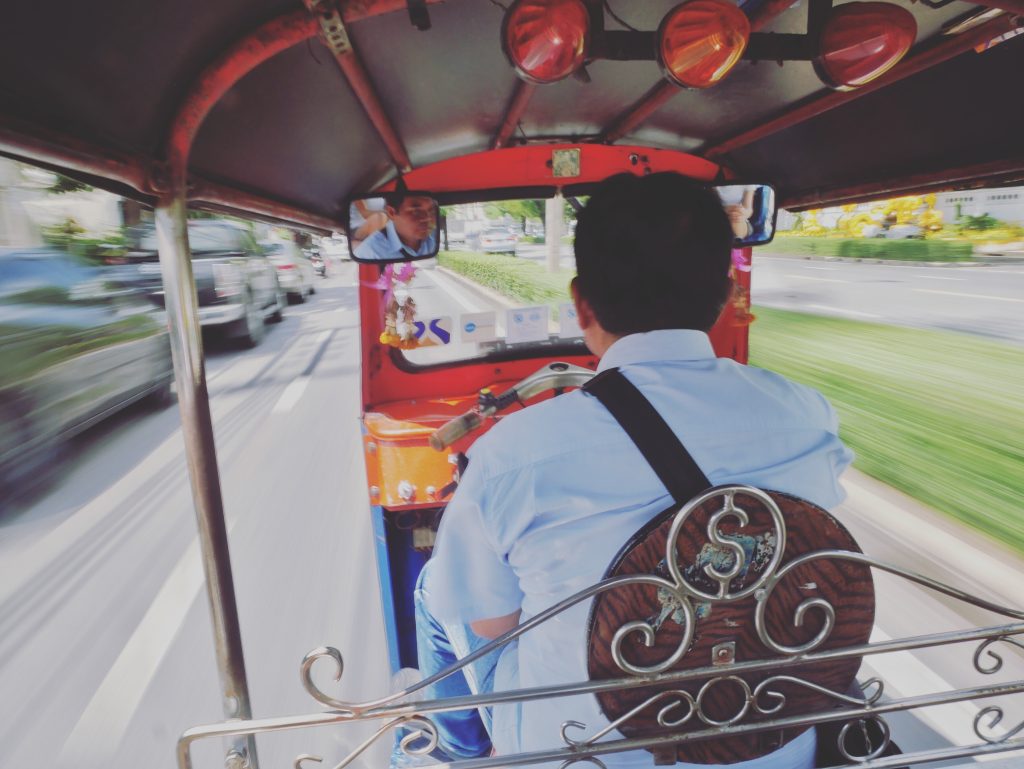
Cultural Significance
Beyond its practical function, the tuk tuk in Thailand has emerged as a cultural icon. It’s frequently depicted in media and artworks, representing the quintessential Thai experience. Local entrepreneurs have seized upon this, turning tuk tuks into mobile bars, tour vehicles, and even boutique shops.
Furthermore, tuk tuks have played a significant role in Thailand’s tourism campaigns, promoting the country as a destination where tradition meets innovation. Their vibrant colors, often adorned with intricate designs and decorations, mirror the country’s aesthetic ethos, where bright hues and detailed craftsmanship abound.
Tips for Riding a Tuk Tuk in Thailand
For the uninitiated, here are some essential tips to make the most of your tuk tuk adventure:
- Negotiate Before Riding: Always agree on a fare before starting your journey. Tuk tuk drivers often quote higher prices to tourists, so it’s advisable to haggle a bit.
- Know Your Destination: Have the name and address of your destination ready, preferably in Thai script. This helps in avoiding any miscommunication.
- Stay Alert: While tuk tuks are generally safe, the open design means you should keep an eye on your belongings, especially in crowded areas.
- Dress Appropriately: Considering the openness of the vehicle, it’s wise to dress modestly and ensure you’re protected from the sun.
- Embrace the Experience: Expect noise, dust, and the occasional exhaust fume. But also anticipate unique perspectives, the thrill of weaving through traffic, and genuine interactions with locals.
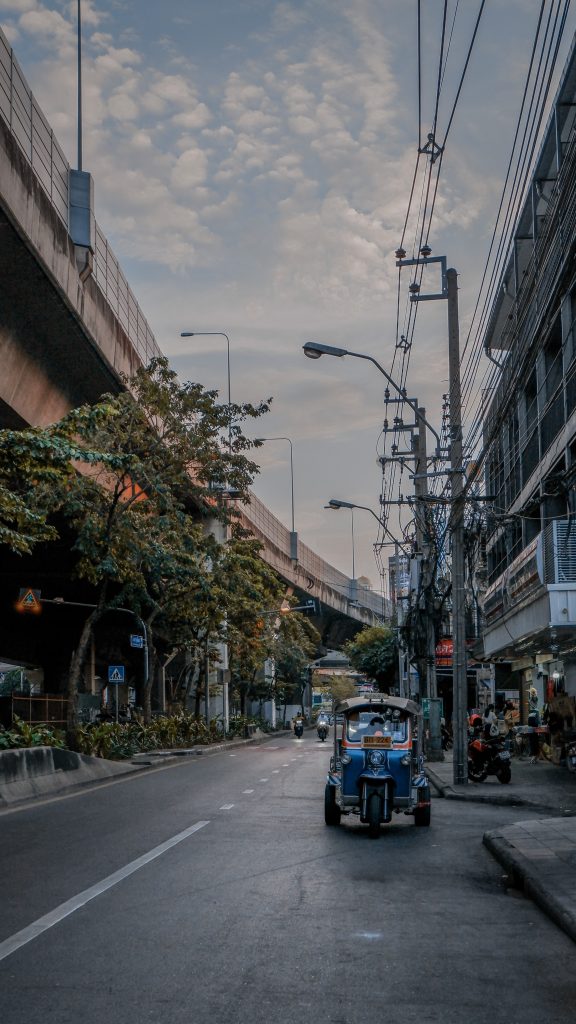
Economic Impact and Future
The tuk tuk industry is vital for many local entrepreneurs. For drivers, it’s often a primary source of income, and they take pride in decorating their vehicles, turning them into moving pieces of art. In tourist-heavy regions, tuk tuk tours have also become popular, where guides take visitors around city highlights or to less-traveled spots.
However, as cities modernize and develop, there are challenges. There are concerns about emissions, road safety, and congestion. While electric tuk tuks offer a more sustainable future, integrating them while preserving the traditional charm is an ongoing endeavor.
Frequently Asked Questions
Q: How much does it cost to ride a tuk tuk in Thailand?
A: The cost varies depending on the distance, location, and the driver’s discretion. However, short rides typically start from 60 to 100 Thai Baht, but it’s always advisable to negotiate the fare beforehand.
Q: Is Tuk Tuk cheap in Thailand?
A: Compared to taxis and rideshares, tuk tuks might be slightly more expensive for tourists, especially in heavily touristic areas. However, the experience is unique and can be worth the added cost for many visitors.
Q: How much is a 10-minute tuk tuk ride in Bangkok?
A: A 10-minute ride in Bangkok could range from 100 to 200 Thai Baht, depending on the traffic and exact location. Again, negotiation is key, and it’s beneficial to have an idea of the distance beforehand.
Q: What is a tuk tuk ride in Thailand?
A: A tuk tuk ride in Thailand is an experience on a motorized three-wheeled vehicle, often used for short distances in urban areas. It provides an open-air journey, offering passengers a direct view of their surroundings.
Q: Are tuk tuks dangerous?
A: While tuk tuks are generally safe, their open design and the audacious driving style of some drivers can make rides feel risky. It’s essential to choose a driver who seems responsible and to be aware of your surroundings during the trip.
Q: What are the disadvantages of tuk tuks?
A: Tuk tuks, while iconic, have some drawbacks:
- They are exposed to the elements, meaning passengers might deal with heat, rain, or pollution.
- They can be more expensive than other transportation modes, especially for tourists.
- Noise and lack of comfort compared to enclosed vehicles.
- Concerns about emissions and sustainability.
Q: Are tuk-tuk tours safe?
A: Most tuk-tuk tours, especially those organized by reputable companies or tourism offices, are safe. These often have experienced drivers who are used to catering to tourists. It’s always good to read reviews and perhaps opt for a tour with a guide for added security.
Q: Do tuk tuks have seatbelts?
A: Traditional tuk tuks do not have seatbelts due to their open design. Some modern or upgraded versions might have them, but they are not standard. Always ensure you’re seated securely during your ride.
Conclusion
To many, riding a tuk tuk in Thailand is a rite of passage—a dive into the heart of Thai culture, wrapped in the cacophony of city sounds and the vibrancy of urban life. Like the gilded edges of a Thai temple or the complex flavors of pad thai, the tuk tuk is a reflection of Thailand’s spirit: colorful, adventurous, and ever-evolving. Whether you’re a tourist seeking an authentic experience or a local on your daily commute, the tuk tuk remains a steadfast symbol of Thai resilience and innovation.
